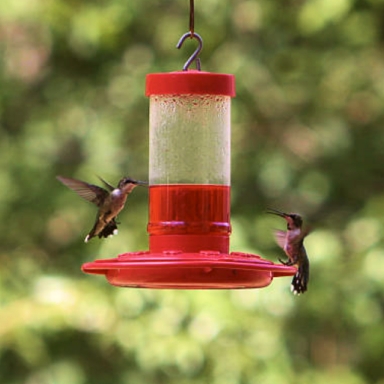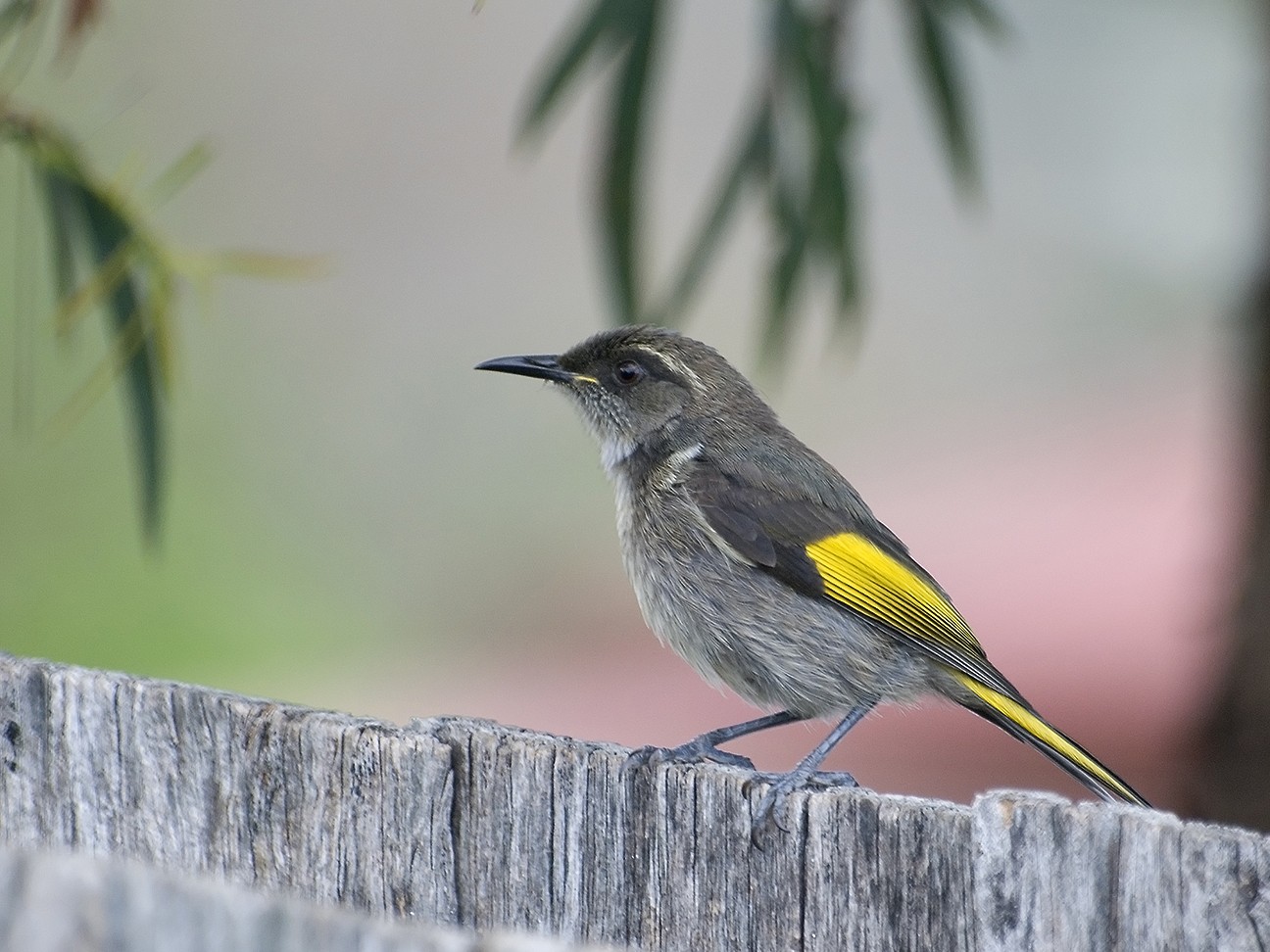Crescent Honeyeater
A species of Yellow-winged Honeyeaters Scientific name : Phylidonyris pyrrhopterus Genus : Yellow-winged Honeyeaters
Crescent Honeyeater, A species of Yellow-winged Honeyeaters
Botanical name: Phylidonyris pyrrhopterus
Genus: Yellow-winged Honeyeaters
Content
Description General Info
Description
The crescent honeyeater (Phylidonyris pyrrhopterus) is a passerine bird of the honeyeater family Meliphagidae native to southeastern Australia. A member of the genus Phylidonyris, it is most closely related to the common New Holland honeyeater (P. novaehollandiae) and the white-cheeked honeyeater (P. niger). Two subspecies are recognized, with P. p. halmaturinus restricted in range to Kangaroo Island and the Mount Lofty Ranges in South Australia. It has dark grey plumage and paler underparts, highlighted by yellow wing-patches and a broad, black crescent, outlined in white, down the sides of its breast. The species exhibits slight sexual dimorphism, with the female being duller in colour than the male. Juvenile birds are similar to the female, though the yellow wing-patches of male nestlings can be easily distinguished. The male has a complex and variable song, which is heard throughout the year. It sings from an exposed perch, and during the breeding season performs song flights. The crescent honeyeater is found in areas of dense vegetation including sclerophyll forest and alpine habitats, as well as heathland, and parks and gardens, where its diet is made up of nectar and invertebrates. It forms long-term pairs, and often stays committed to one breeding site for several years. The female builds the nest and does most of the caring for the two to three young, which become independent within 40 days of laying its egg. The parent birds use a range of anti-predator strategies, but nestlings can be taken by snakes, kookaburras, currawongs, or cats. While the crescent honeyeater faces a number of threats, its population numbers and distribution are sufficient for it to be listed as of Least Concern for conservation. 
Size
17 cm
Nest Placement
Tree
Feeding Habits
Crescent Honeyeater's diet includes nectar, fruits, and insects, feeding by probing, gleaning, or sallying. With seasonal shifts, crescent Honeyeater focuses on insects during breeding and nectar in winter. Feeding can be solitary or in flocks, with specialized foraging on varied native flora.
Habitat
The crescent Honeyeater primarily inhabits dense, shrub-rich environments across various forest types, including wet and dry sclerophyll forests dominated by Eucalyptus and conifers, often accompanied by a mid-story of Acacia and tall, dense underbrush. At higher elevations, it frequents subalpine woodlands and alpine heaths. This species also adapts to heathlands, coastal shrublands, and in some regions, urban parks and gardens. Though capable of seasonal migration, some populations remain sedentary, and their movements within its range can include nomadic foraging patterns.
Dite type
Nectivorous
General Info
Feeding Habits
Bird food type
Bird Feeder Type

Nectar Feeder
Distribution Area
There are records of scattered populations of the crescent honeyeater on the Central Tablelands, the Mid North Coast, and in the Hunter Region of New South Wales, and it is widespread in the areas of New South Wales south of Dharug National Park and east of Bathurst. In Victoria it is widespread across an area from the NSW border south west to Wallan with scattered populations recorded further west. It is widespread in Tasmania, except in the northeastern part of the state where it is more sparsely distributed. It is restricted to sclerophyll forest in eastern South Australia, where isolated populations have been recorded in the Mount Lofty Ranges and on Kangaroo Island. Local influxes have occurred outside its normal range in response to changes in habitat. Recorded population densities range from 0.3 birds per hectare (0.12/acre) near Orbost, to 8.7 pairs per hectare (3.5/acre) in Boola Boola State Forest, also in Victoria. While the crescent honeyeater occupies a wide variety of habitats including coastal heath, rainforest, wet sclerophyll forest, mountain forest, alpine woodland, damp gullies and thick tea-tree scrub, they all demonstrate its preference for dense vegetation. It has been frequently recorded in wet sclerophyll forest dominated by eucalypts and with a thick mid-story and understory of shrubs such as blackwood, silver wattle, Cassinia, Prostanthera, and Correa. At higher altitudes it occurs in alpine heathlands and in woodlands of stunted eucalypt or conifers. The movements of the crescent honeyeater within its range are incompletely known. There is widespread evidence of seasonal migration to lower altitudes in cooler months, yet a proportion of the population remains sedentary. Autumn and winter migration to the lowland coastal areas is seen in southern Tasmania, where it is not unusual to see it in urban parks and gardens, as well as in Gippsland, and the New South Wales Central and South Coast. In the Sydney region, some birds appear to move down from the Blue Mountains to Sydney for the cooler months, yet others remain in either location for the whole year. It is only seen in alpine and subalpine areas of the Snowy Mountains in warmer snow-free months (mainly October to April). Other populations of crescent honeyeaters follow a more nomadic pattern of following food sources; this has been recorded in the Blue Mountains and parts of Victoria. 
Species Status
While the population numbers and distribution are sufficient for the crescent honeyeater to be listed as of Least Concern for conservation, numbers have fluctuated significantly over the past twenty-five years and currently seem to be in decline. The threats to the crescent honeyeater include habitat destruction, as the alpine forests in which it breeds are being reduced by weed infestations, severe bushfires, drought and land-clearing. The crescent honeyeater's dependence on long-term partnerships and breeding territories means that breeding success is threatened by the death of one partner or the destruction of habitual territory. The influx of birds to urban areas also places them at increased risk of accidents and predation. Cats have been recorded preying on crescent honeyeaters, and at least one guide urges cat owners to keep their cats in enclosures when outside the house or to provide a stimulating indoor environment for them. 
